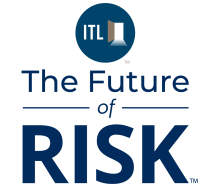As recently as a decade ago, most organizations and individuals thought of their insurance policies as just that—an insurance policy. In other words, they typically only considered insurance as a reaction to an incident, and not a way to reduce risk.
However, times are changing. In its latest national survey, "Risk Radar Report—Insurance Pulse Check," Church Mutual Insurance found that 63% of U.S. adults have reviewed their property coverage in the past six months. This is driven by increasing concerns about coverage gaps amid rising costs and severe weather.
The report indicates policyholders are looking for their insurers to clarify coverage and help them reduce risk. Ideally, insurance companies will establish a relationship with their customers that allows them to address potential problems before those problems lead to a claim.
Identifying and mitigating risks
The key to this relationship between insurance companies and their customers is in identifying and mitigating risks to the properties. In the report, more than half of consumers (56%) say they would explore ways to protect their property and avoid a loss.
Customers can't do this alone. They need the guidance of trained, experienced insurance professionals who can help them spot issues that could lead to damage from storms or other catastrophes. For example: curled or missing shingles, vegetation that is too close to the building (and thus a risk in the event of a wildfire), and clogged gutters that could prevent drainage.
But merely pointing out these risks isn't enough; insurance professionals should be taking the time to show their customers how the risks can lead to major property damage. This is where the numbers come in. Statistics speak volumes, and insurance companies certainly have data that show why risk management is so important. They need to use this data to paint a vivid picture for policyholders—and, indeed, the survey indicates consumers want and need these honest conversations with their insurance company representatives.
Review of coverage
Not only do consumers need to know how they can mitigate risk, but they also need—and want—a better understanding of what their policy covers. Additionally, they need to know the application of policy terms and conditions if they should need to file a claim.
Because of inflation and the rising costs of building materials, repairs and renovations cost much more than they did even 10 years ago. The result of this increase in costs is that many individuals and organizations may believe they hold the right amount of insurance, when in fact it is not enough. This often becomes apparent only when they are making a claim and are surprised to find they are underinsured.
But the survey signals consumers want to review their property insurance before they need to make a claim. This approach is a win-win for both the insurance company and the policyholder.
Both individuals and organizations are taking more ownership of their insurance policies than ever before. It is up to insurance companies, brokers and agents to meet them where they are, providing timely updates, appropriate options and cost-saving risk reduction strategies.






